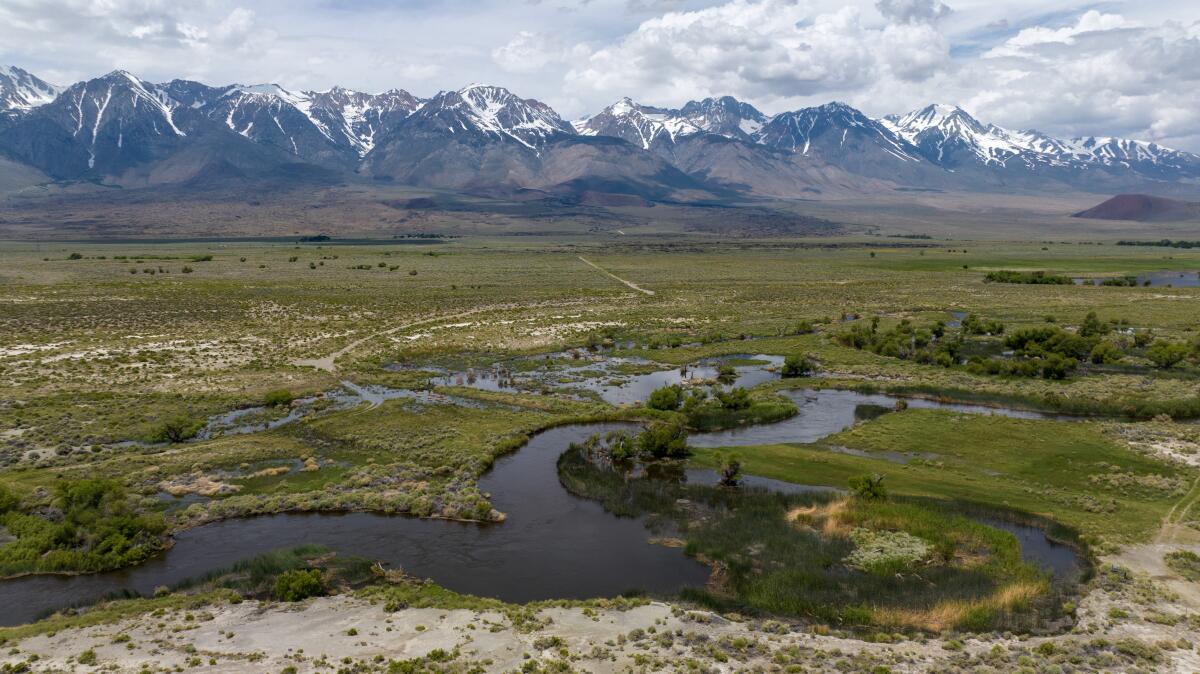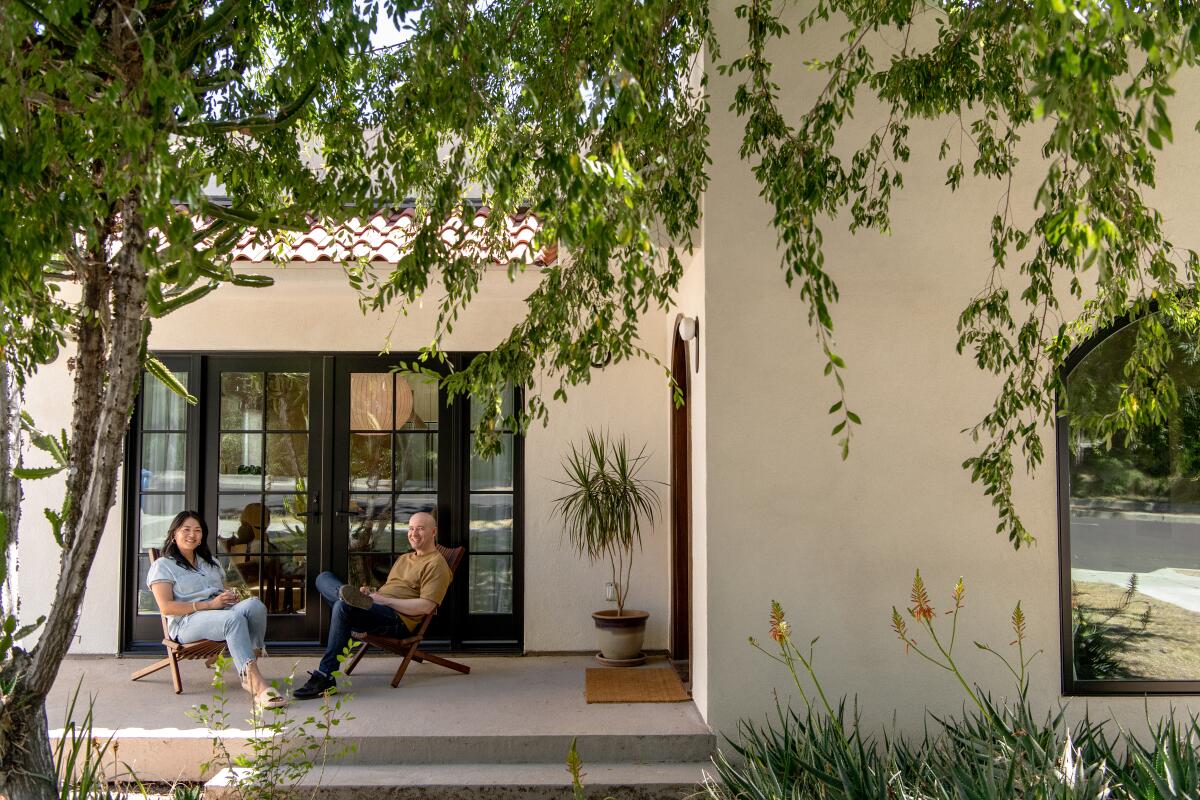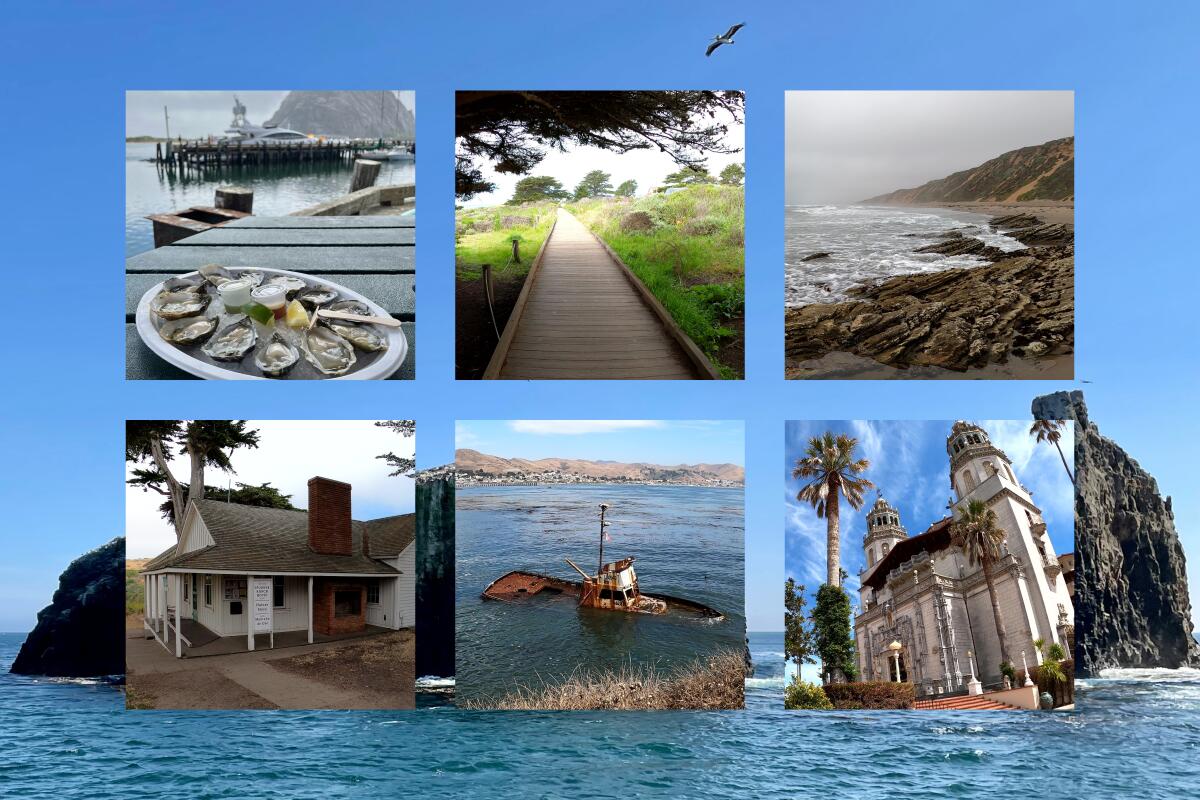There’s a car-sized hole in recent e-bike safety concerns

- Share via
You may notice a new look and feel here! We have merged our two morning newsletters and are excited to get you the most important news, features and recommendations from the L.A. Times and beyond, in a sleeker and faster presentation.
Good morning. It’s Friday, Sept. 8. Here’s what you need to know to start your day.
- Are safety concerns about e-bikes misplaced?
- California water conservation rules could force big cuts
- 12 glorious spots to take in the crisp 70-degree air in California’s Central Coast
- And here’s today’s e-newspaper
Sign up for Essential California
The most important California stories and recommendations in your inbox every morning.
You may occasionally receive promotional content from the Los Angeles Times.
There’s a car-sized hole in recent e-bike safety concerns
Earlier this summer, Brodee Champlain Kingman, a 15-year-old, was hit and killed by a driver while riding an e-bike in the city of Encinitas.
Following his death and another crash that involved a car striking a teen e-bike rider, the city declared a state of emergency. Officials blamed “conditions of extreme peril … caused by the increased prevalence of [e-bikes], other similar electric or motorized mobility devices, and traditional bicycles on city streets.”
I noticed a car-sized hole in much of the media coverage and government response; overwhelmingly, the collisions and injuries and deaths resulted from a car driver hitting a bike rider. But you wouldn’t necessarily know that from reading news articles or government reports.
The focus on young e-bike riders’ safety can obscure the bigger crisis: People driving cars and trucks are killing more people on our roads.
What is Encinitas doing in face of this emergency? They’ve launched a public education campaign on yard signs and electronic billboards aimed at raising awareness of traffic safety issues. The San Diego County Sheriff’s Department is tasked with stopping e-bike riders for violations and requiring mandatory education or a fine. City officials will also consider “potential safety improvements” to local streets in a meeting next week, a city spokesperson told me.
In the emergency resolution, officials wrote that collisions involving bikes or e-bikes increased each of the past three years. From 2020 through the end of June 2023, they report 109 such collisions on city streets. They did not mention how many of those collisions involved a car.
So I put that question to the sheriff’s department, which manages collision data, and was provided figures showing 86 crashes involving electric bikes from the start of 2020 through the end of July 2023. The vast majority of those crashes — roughly 88% — also involved someone driving a car or truck.
If the goal is to understand what makes streets dangerous, we have to look at cars. The biggest danger bike riders, pedestrians and everyone else face is a transportation system built to move cars and move them quickly. The consequences of that system are abundantly clear.
There’s been notable media attention on e-bikes and robotaxies as we attempt to understand their potential — both positive and negative. Concerns over electric scooters similarly held our attention before the pandemic, but as government officials established regulations, the coverage of the chaos they brought to cities fizzled. It’s easier to focus on the unfamiliar than to scrutinize the dangerous machines we’ve used for more than a century.
In the U.S., more than 42,000 people were killed in traffic last year. In California alone, nearly 3,700 people have died in crashes on average in each of the past five years. That’s roughly 10 people each day.
In the face of that mounting death toll, how does declaring a state of emergency in response to a rise in collisions involving e-bikes stack up?
Jared Sanchez, policy director for the nonprofit bicycle organization CalBike, told me the small but increasingly vocal group of bike advocates generally supports increased education for bike riders. But he’s concerned that the focus on safety, especially related to children, represents a form of victim blaming and a backlash to the increasing embrace of e-bikes as an alternative to car travel.
“It’s easier to pinpoint or regulate not just vulnerable road users, but [also] the minority mode on our roads and streets,” Sanchez said.
“The more [bikes] we have on the road, I think the safer folks will be,” he added. “The infrastructure and the funding will follow.”
Today’s top stories

California’s climate challenge
- California state officials are moving forward with a new framework for urban water use that could require some suppliers to make cuts of 20% or more as soon as 2025.
- As summer heat worsens, voters back mandatory cooling standards for buildings and expanded federal disaster aid, a new Berkeley IGS/Los Angeles Times poll finds.
- California is going big on offshore wind. That’s good for the climate, but not enough.
The latest on the strikes
- Warner Bros.’ suspension of high-profile producer deals highlights heightening tensions as the writers’ strike enters its fifth month.
- Leaders from the actors’ and screenwriters’ unions, both currently on strike, protested outside Amazon’s Culver City offices in support of state Senate Bill 799.
COVID and flu in California
- The summer COVID bump is worsening in California, with infections spreading at schools and workplaces and hospitalizations ticking up.
- The Huntington Beach City Council voted this week to ban the implementation of COVID vaccine and mask requirements in the city.
- Here’s what you need to know about flu shots and when to get them, based on the latest information from the U.S. Centers for Disease Control and Prevention.
More big stories
- Danny Masterson was sentenced to 30 years to life for raping former Scientologists.
- The Biden administration is considering forcing some migrant families who enter the country without authorization to remain near the border in Texas while awaiting asylum screening.
- Gov. Gavin Newsom sends more CalGuard members to the border in an effort to halt the flood of fentanyl.
- Whether you’re a Democrat or a Republican affects how you perceive big-city safety. But both sides are getting it wrong.
- California laws banning unlicensed people from openly carrying handguns in public are under greater legal threat after a court decision Thursday.
- Mexico is on track to elect its first woman as president.
Get unlimited access to the Los Angeles Times. Subscribe here.
Commentary and opinions
- Op-ed: Oceans are heating up. Who will protect the turtles, whales and fish crossing borders into cooler waters?
- Op-ed: How California can get on the right path and give Latinos a bigger voice in government.
- Harry Litman: Some of former President Trump’s co-defendants could go to trial this fall. Will he have to join them?
- Op-ed: Yes, I’ve heard a thousand Burning Man jokes. Here’s what I got out of this year’s epic mud event.
Today’s great reads

How a Spanish bungalow in L.A. went from sad to sexy. When Jing Guo and Gabriel Taylor Russ first bought their Eagle Rock home, they had to hire someone to rip out the urine-soaked flooring. Now, European French oak engineered hardwood floors contribute to the home’s clean look.
Other great reads
- Read, listen and study everything aja monet does.
- Beyoncé’s birthday Renaissance show celebrated the depths of Black womanhood.
How can we make this newsletter more useful? Send comments to essentialcalifornia@latimes.com.
For your downtime

Going out
- 🛣️ Road Trip: Visit 12 glorious spots to take in the crisp 70-degree air in California’s Central Coast.
- 🖼️ Check out two permanent collection exhibits at the Museum of Contemporary Art that map L.A. art — and the museum’s limits.
- 🏃♀️ Intimidated by hardbody hikers? Try these challenging (and fun) urban stair walks.
Staying in
- 📺 (Spoiler alert) Watch the finale of “The Afterparty.” Then read what the show’s leaders had to say about the clues that reveal the killer in Season 2.
- 🧑🍳 Here’s a recipe for Mini Kabob’s Pan-Seared Chicken Cutlets.
- ✏️ Get our free daily crossword puzzle, sudoku, word search and arcade games.
And finally ... a great photo
Show us your favorite place in California! Send us photos you have taken of spots in California that are special — natural or human-made — and tell us why they’re important to you.
Today’s great photo is from Debra Liestman of Tehachapi, Calif.: The Tehachapi Loop.
Debra writes:
The Tehachapi Loop is a marvel built landmark which took only 2 years to construct from 1874 to 1876.
Have a great day, from the Essential California team
Ryan Fonseca, reporter
Elvia Limón, multiplatform editor
Kevinisha Walker, multiplatform editor
Laura Blasey, assistant editor
Check our top stories, topics and the latest articles on latimes.com.
Sign up for Essential California
The most important California stories and recommendations in your inbox every morning.
You may occasionally receive promotional content from the Los Angeles Times.







